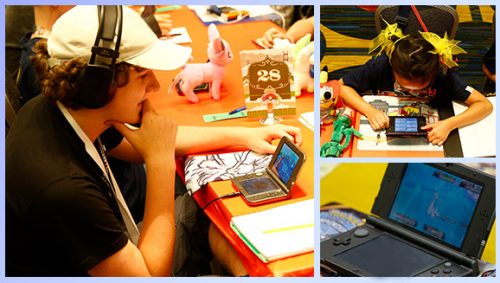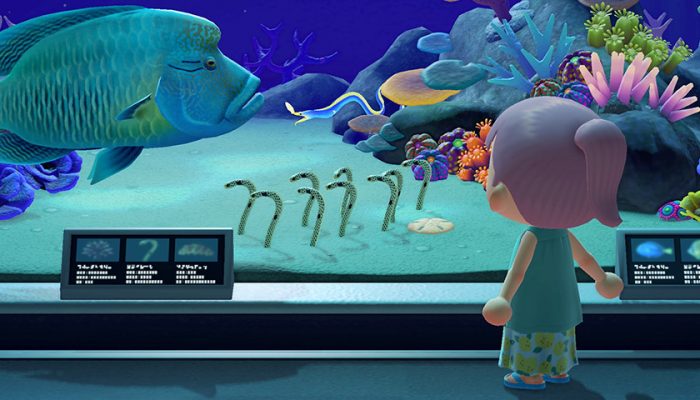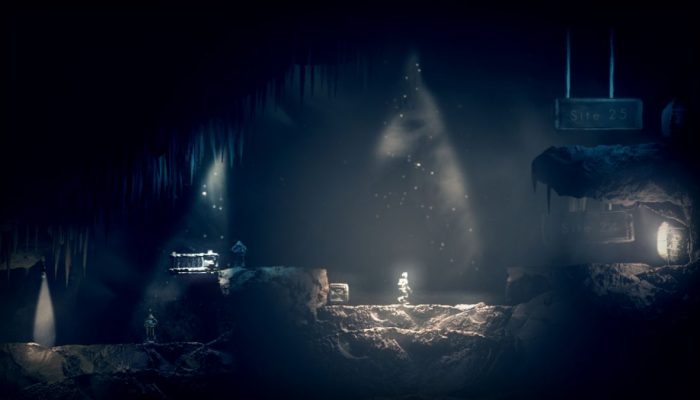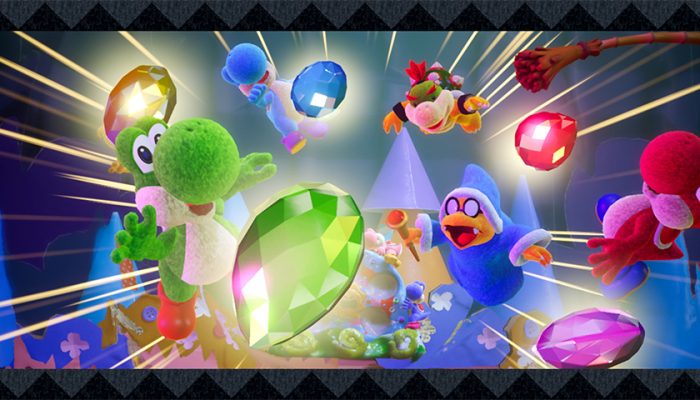 Mastering the basics.
Mastering the basics.
☆ NintendObs Weekly – Monday, October 31, 2016 – Sunday, November 6, 2016.

An Introduction to the Video Game Championships
Are you looking for a new challenge after completing your adventures in the Pokémon video games? Perhaps you watched some battles from the Pokémon Championship Series and wondered how you could get involved, or maybe you’re just looking to meet some new friends to play Pokémon with. It can be a lot of fun to participate in the Pokémon Video Game Championships, and participating in official Play! Pokémon tournaments is your chance to prove you’re really the very best!
The Pokémon Video Game Championships (VGC) let you battle against Trainers from all over the world and compete for great prizes all year long. Some Trainers prefer just to battle at local events from time to time, while others work toward the ultimate goal: an invitation to the annual Pokémon World Championships. Attending an event in person can be as simple as finding an event near you in our Event Locator and heading out to compete.
Read on to learn how to make the most of your first events.
What You Need to Know to Compete
Competing in a Pokémon video game tournament is simple. For the 2017 season, you’ll need to bring your own copy of Pokémon Sun or Pokémon Moon and a game system in the Nintendo 3DS family of systems. Some competitions require an entry fee, as well—find out if your event does by looking it up in the Event Locator or by contacting your local Tournament Organizer.
You must also bring a team that is legal for the competition you’re entering. Each year there are at least some Pokémon that aren’t permitted for use in the Video Game Championships. During the 2017 VGC season, only Pokémon in the Alola Region Pokédex will be permitted for use.
There are other restrictions, too. Mythical Pokémon that can be acquired only through special events, such as Mew, Volcanion, and Magearna, are never permitted in the Video Game Championships because of their rarity. And typically the most powerful Legendary Pokémon aren’t permitted, either—these historic Pokémon are just much more powerful than other Pokémon. Mewtwo, Groudon, Xerneas, and Solgaleo are all part of this group.
Some other Legendary Pokémon are normally permitted for use, such as Zapdos, Cresselia, and Landorus. These special Pokémon are more difficult to capture than many other Pokémon, but you’ll find their stats are comparable to other strong non-Legendary Pokémon you can raise, such as Dragonite, Tyranitar, and Goodra. Check out the Rules & Resources website to find a list of banned Pokémon for the current season.
Before you can rule battles, you need to know the rules for battles. The key rules of the Pokémon Video Game Championships stay the same each year, so each year’s format should feel familiar. Find the full set of current rules by visiting our Rules & Resources page and selecting the Play! Pokémon VG Rules and Formats link. We’ll go over some of the most important rules now.
Each Pokémon on your team must have a different Pokédex number. You won’t be able to use two Pikachu on your team, for example, or even two variations of the same Pokémon, such as Wash Rotom and Heat Rotom. You can’t use duplicate held items either, so each of your Pokémon will need to hold a different item. These restrictions may force you to think a little differently about your strategies than you did during your solo adventures.
Battles in the Video Game Championships use the Double Battle format instead of the Single Battle format from your adventures or battling with your friends. Double Battles tend to finish more quickly than Single Battles, which keeps tournaments moving smoothly. Plus, some moves that might not have been very helpful during your adventures, such as Follow Me, Helping Hand, and Protect, are much more powerful in Double Battles. You’ll soon find that in Double Battles, it’s important to try to make a team of Pokémon that work well as a unit instead of just collecting powerful individual Pokémon.
Players are normally required to use Pokémon that originated in the most recent generation of video games. For instance, during the 2016 VGC season, Trainers could only use Pokémon that had the blue pentagon symbol, indicating that they were native to Pokémon Omega Ruby, Pokémon Alpha Sapphire, Pokémon X, or Pokémon Y.
Challenge the Pokémon Championship Series
There are several different levels of events on the road to the Pokémon World Championships: Premier Challenges, Midseason Showdowns, Regional Championships, and International Championships. Only the Pokémon World Championships requires an invitation—you can play in any other event you want to just by showing up, even if you haven’t played in other events before.
All Championship Series events use the Swiss format, which means that each round you’ll be paired with another player that has the same record as you do. Even if you lose, you’ll be able to keep battling throughout every Swiss round. You could even win a tournament after an early loss!
Most Trainers start out battling in local events called Premier Challenges and Midseason Showdowns. These events are a great way to make your tournament debut and meet up with fellow Trainers who live near you. Midseason Showdowns offer more Championship Points and tend to have more players than Premier Challenges, so these events tend to be tougher, too. The easiest way to find Premier Challenges and Midseason Showdowns is by using the Event Locator to find tournaments near you.
The next higher level of competition is the Regional Championships. These larger events reward more Championship Points than Midseason Showdowns or Premier Challenges, and have much greater prizes. Regional Championships offer a greater challenge than local tournaments, and they can be a great chance to see where you stack up against some of the toughest competition in the country. You can see the locations of all the Regional Championships in North America and find out more about Regionals here.
The largest open-invitation events in the Championship Series are the International Championships, which are large-scale competitions that draw players from all over the globe. You’ll find one International Championships event in each of the large rating zones—North America, Europe, Latin America, and Asia Pacific. These events give out the greatest prizes, and the top Trainers in each region earn Travel Awards to make it easier for them to attend these exciting events. Find more information about the competitions at our International Championships page.
As mentioned earlier, the Pokémon World Championships is the ultimate goal for Pokémon competitors, and the only event in the Championship Series that requires an invitation. Trainers can earn an invitation by winning Championship Points, which are awarded to the top Trainers at each event. You can learn more about Championship Points here. Championship Point totals reset at the beginning of each season, so it’s never too late to get started.
Keep Track of the Time
At the beginning of each match, you and your opponent will show each other your full party of six Pokémon during a special turn called Team Preview. You can get a lot of information about your opponent’s plan from this period, and the more you play, the easier identifying these plans will be. But remember, after Team Preview and before your match begins, you and your opponent will choose only four Pokémon to battle with.
Battles in the Video Game Championships use timers that keep matches to a reasonable length of time. Unlike in the Pokémon TCG, judges don’t determine if players in the video game are taking too much time each turn—it’s built into the game. In VGC battles, the game determines the pace of play, so feel free to take as much as time as you’re allotted. There is a turn timer for each round. If you don’t enter your moves before time is up, any remaining Pokémon will have their moves selected for them! There will also either be a timer for the match or for each player. When there’s a match timer, a tiebreaker determines who wins after time expires. If you’re battling with the “Your Time” feature instead, you lose if your personal time is up before you knock out all of your opponent’s Pokémon, so be careful.
It’s Time to Battle
Give yourself plenty of time to arrive at the event location early. You usually have to register before the competition begins, and for larger events this registration period could end the day before. If you registered online or in advance, you may also need to check in before the competition. Remember, if you have any questions, don’t hesitate to ask an organizer or a Pokémon Professor on site. Note that your game may also be checked to ensure that your team is fully legal and complies with the tournament format.
You probably already have your game system and your Pokémon game, so the main thing you need to get ready before you compete is your team. We strongly suggest you spend plenty of time getting your team ready in advance—too often, we’ve seen players accidentally forget to give their Pokémon a held item or forget to teach their Pokémon a move because they were still adjusting their team in the registration line! Also, a day of battling can be long; we suggest you get plenty of sleep the night before your event. You may also want to bring water or snacks with you to longer tournaments, such as the Regional Championships.
Battling Basics
Building a solid team is usually a matter of practice. We strongly suggest you practice using the “Championship Battles” battle format in Rating Battles on the Pokémon Global Link before you head out to your tournament. It uses the same rules as the VGC competitions so you can familiarize yourself with the format before you attend a tournament. Take note of the strategies used by your opponents, and try to come up with your own strategy that can defeat each of them.
Here are a few quick tips for building your team:
- Try to use Pokémon from a variety of different types. Top teams tend to be full of Pokémon representing different types that work well together. For instance, many Trainers try to include the combination of a Fairy-, a Dragon-, and a Steel-type Pokémon on their team. Others swear by the traditional trio of Grass-, Fire-, and Water-type Pokémon.
- You will notice some Pokémon are much more common in VGC battles than others. No matter the format, many Trainers will trend toward the Pokémon available with the highest stats and the ability to learn many powerful moves. In VGC 2017, this group of Pokémon includes the available Legendary Pokémon and some other key Pokémon such as Kommo-o, Silvally, and Garchomp. You definitely don’t need to use these Pokémon yourself to win—but it’s important that you have a plan ready to take on popular Pokémon!
- You’ll probably want to hatch your Pokémon from the Pokémon Day Care and then train them carefully. We’ll update our guides on both of these important concepts shortly after the release of Pokémon Sun and Pokémon Moon.
If you’re not sure where to start, try checking out teams that have proven successful for other Trainers at recent tournaments. You can always find recent winning teams by checking out Pokemon.com/Strategy.
Try not to feel nervous starting out—not even the best Trainers can win every match. Battling against other players can be much tougher than battling against the Trainers you encountered during your adventures, but it can be even more fun and rewarding, too. You can always find the latest news about Pokémon tournaments at Pokemon.com/PlayPokemon and about Pokémon TCG and video game strategy at Pokemon.com/Strategy.
Good luck in your first tournaments, Trainers!
Source: Pokémon.
At NintendObserver, the comments are on Discord.
Click on Community to learn more. 🙂
…
And if you’ve already got yours, click on Pokémon Sun & Moon for everything you need to know about the games. 😀



